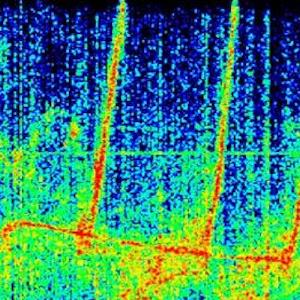Hey synth lovers (and addicts)! Ever wonder what goes into the making of a synthesizer? Big or small, basic or complex, boutique or industrial - What materials, minerals and metals are used to build such marvellous devices? What type of toxic practices add up to the making of these instruments that many worship and swear by? Where the components come from? What labour conditions exist inside factories in China (where an overwhelming majority of all synthesizer components originate) What kind of pollution and environmental damage is involved in the production of synthesizers, electronic instruments, cables, jacks and all such peripheral devices? What happens to your synthesizer once it's tossed out as junk? Where does it end up? Worth a thought? Well, it's high time you did... Synthesizers don't come cheap and the making of all such instruments does bear a negative impact on the environment, the earth's finite resources and lives of many thousands of people. A cause and effect that artists cannot ignore (should less deny). The brands and the artist equally culpable in this case. This article is focussing on the contamination aspect of the synthesizer industry and how most big and small brands ignore and deny their part, which consequently perpetuates mining, pollution, toxic leftovers, adding to the rising mountains of electronic waste.
There are thousands of articles published (every year) about 'Top Synthesizers' plus millions of adverts and videos enticing us to buy the newest or most ground-breaking synthesizer. In a society deeply mired in object worship and brand loyalty thats a given. We love to horde! We might have bought one or three or 'x' synthesizers in the last five years. The reasons way too personal or cultural, yet obvious too. However the denial and or ignorance towards the environmental impact, created by industry and artists is equally abject. Creating wanton e-waste years on, which ends up in countries destroyed by toxic globalisation? We love synthesizers and go to great lengths and depths (of our pockets) to acquire as many that we can. Each synthesizer colours our music, sound and imagination, as well contains elements which eventually harm the planet's ecosystem. A dilemma indeed!
There are a few lovely museums dedicated to the conservation of synthesizers, many websites eulogising cult synths, many self-styled experts discussing the next-new-must-have, however we never seem to speak about the toxic graveyards, the pollution and those who sift through our discarded 'synth-junk'. Music made from synthesizers dominates the world today. What also dominates is consumer desire driven by industrial technology and rabid hype, often manifesting as "let me own just one more synthesizer". Think before you run to buy your next synthesizer... Could there be smarter options? Could we share, donate & re-calibrate synthesizers? Could Synthesizer brands reduce their dependence on non-renewable elements and roll back output of toxic waste? Could synthesizer brands practice greener ethics and contribute to recycling e-waste? Can future synthesizers be bio-degradable? Can synthesizers be made from non-toxic elements? Organic dare we say?! Can the future of synthesis be environmentally safer and responsible? As artists and musicians could we actively practice better e-waste management?
Major synthesizer brands like Roland, Korg, Behringer, Novation, Moog, Nord and Arturia do not declare the environmentally harmful and toxic components which are used in the production of synthesizers. Let alone there is near zero action about taking any 'environmental and social responsibility' inside this industry. Instead a considerable amount of their time and resources dedicated to maximising profits and amplifying hype. Building up to the writing of this article, we sent out several emails to synthesizer brands, seeking a list of potentially toxic minerals and environmentally harmful components present inside their products. Many denied of any such fact and the rest remained silent. Minerals and metals like aluminium, mercury, lead, silver, zinc, chromium, cadmium, iron and copper are present inside integrated circuit boards, wires, resistors, capacitors, diodes, knobs, switches, batteries and cables. The same minerals are also one of the biggest contributors to land and water pollution around the world. However one cannot criticise the synthesizer brands alone, when the rest of the electronics industry is actually way worse, continuously adding to the pollution and destruction of the eco-system. So what happens to all the 'post-synth waste' (part of the whole e-waste)? Which part of the world handles the debris of dead and discarded gadgets? Where do obsolete and rundown electronic instruments, gadgets and cables end up? Ghana, China, Indonesia, Chad, India and Pakistan mostly. A recent study by Shanghai Scrap documents the devastating consequences of electronic waste and how thousands of people scrape, scavenge and suffer inside vast cesspools of e-waste. Expensive synthesizers and mobile phones have tiny traces of gold and silver we hear? Ironic when we see the same objects worshipped and endorsed by artists, vendors and experts everyday, who never pause to think about the massive trail of garbage and toxicity building up in the poorest countries around the world.
Recently, the most revered brand of synthesizers on earth, Moog, declared "All components used by US companies will be 25% more expensive than for those companies who don't reside in the US, which will dramatically increase the cost of building a synthesizer." Consequently Moog synthesizers will be priced even higher than before. A back-lash to the current ongoing trade-wars (game of 'economic' thrones) between America and China. However, research indicates that leading American brands selling musical instruments had out-sourced their production, fabrication, packing and shipping to Chinese conglomerates long before this trade-war ever emancipated. 74% of all basic synthesizer components, integrated circuits, casing and peripherals is made in China. Less than 15% of all synth makers are able to procure components outside China. Moog may always be 'Made in America' garnished by artisan ethics, yet the components, circuit boards and peripheral hardware is mostly 'By China'. Very much like Apple or Walmart products, however microscopic in terms of size and dominance. Moog is about profit maximisation like any given synthesizer brand, only difference being the revered status created by institutional hoodwink. An article in Fact Magazine, titled "Moog are the music makers: Inside the small town factory that builds the world’s best-loved synths" is a good example of brand-worship and exceptionalism. The article claims that "Moog’s instruments are the Stradivarius violins of tomorrow..." Object worship and speculation aside, the article is mostly fabricated to merit the small factory, it's familial values, late-great uncle Bob's initial challenges, about 'wood from Tennessee', and 'Moog as a way of life' etc. Oh well... Make America Great Again? It's Business As Usual.
There are thousands of articles published (every year) about 'Top Synthesizers' plus millions of adverts and videos enticing us to buy the newest or most ground-breaking synthesizer. In a society deeply mired in object worship and brand loyalty thats a given. We love to horde! We might have bought one or three or 'x' synthesizers in the last five years. The reasons way too personal or cultural, yet obvious too. However the denial and or ignorance towards the environmental impact, created by industry and artists is equally abject. Creating wanton e-waste years on, which ends up in countries destroyed by toxic globalisation? We love synthesizers and go to great lengths and depths (of our pockets) to acquire as many that we can. Each synthesizer colours our music, sound and imagination, as well contains elements which eventually harm the planet's ecosystem. A dilemma indeed!
There are a few lovely museums dedicated to the conservation of synthesizers, many websites eulogising cult synths, many self-styled experts discussing the next-new-must-have, however we never seem to speak about the toxic graveyards, the pollution and those who sift through our discarded 'synth-junk'. Music made from synthesizers dominates the world today. What also dominates is consumer desire driven by industrial technology and rabid hype, often manifesting as "let me own just one more synthesizer". Think before you run to buy your next synthesizer... Could there be smarter options? Could we share, donate & re-calibrate synthesizers? Could Synthesizer brands reduce their dependence on non-renewable elements and roll back output of toxic waste? Could synthesizer brands practice greener ethics and contribute to recycling e-waste? Can future synthesizers be bio-degradable? Can synthesizers be made from non-toxic elements? Organic dare we say?! Can the future of synthesis be environmentally safer and responsible? As artists and musicians could we actively practice better e-waste management?






























0 -